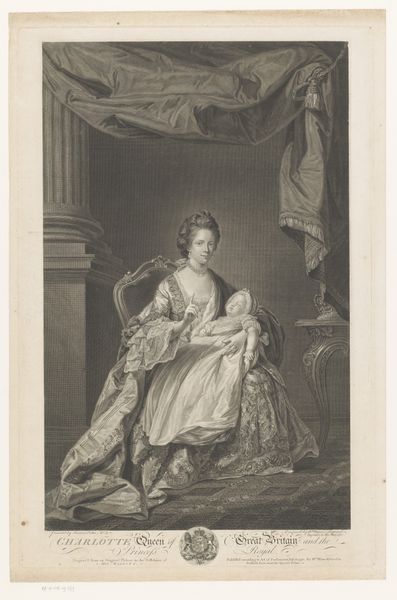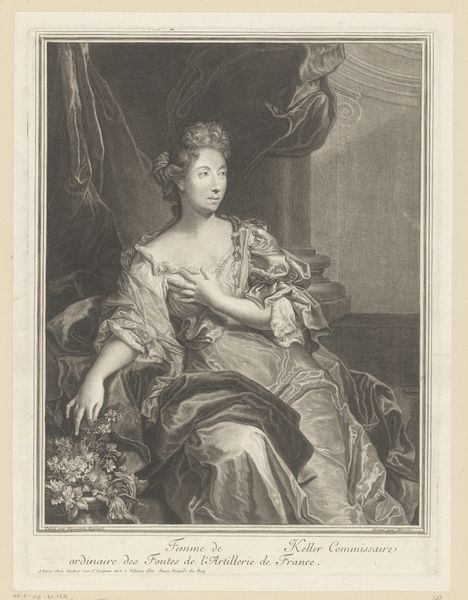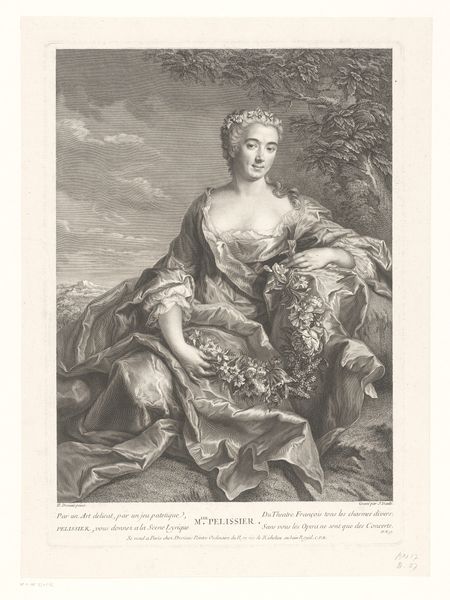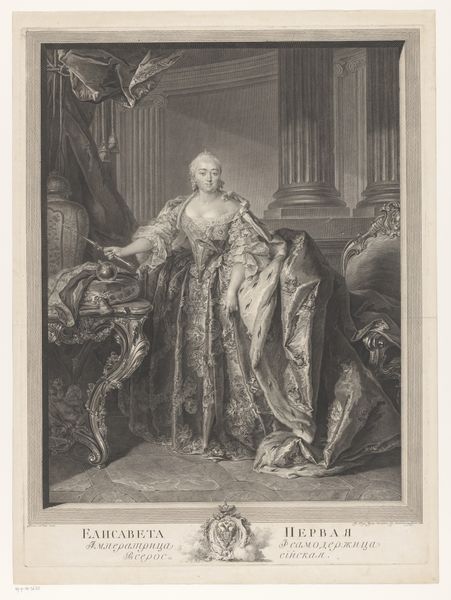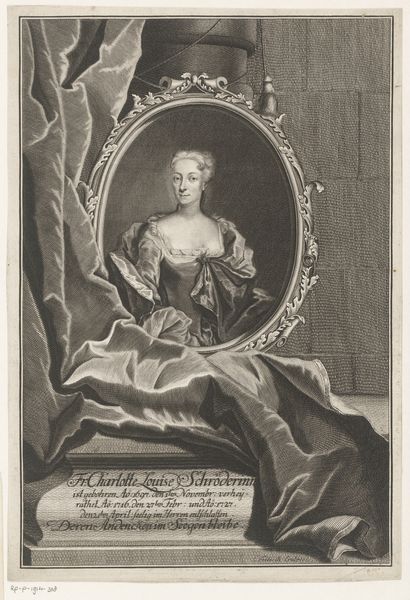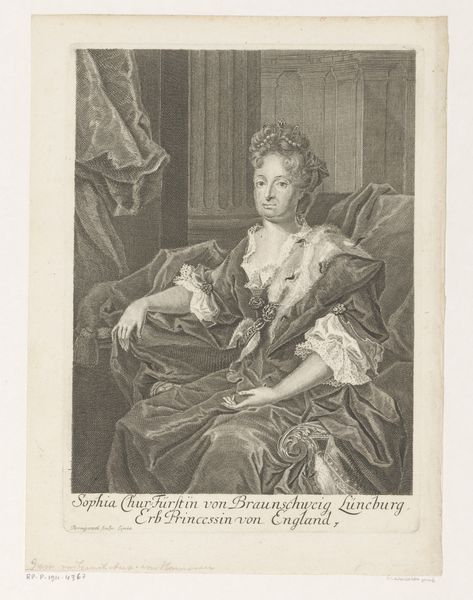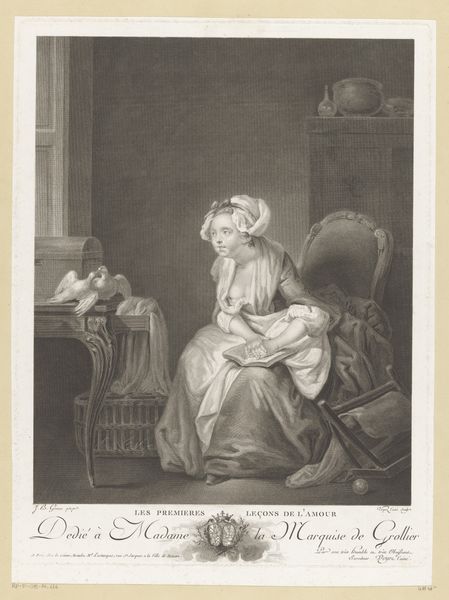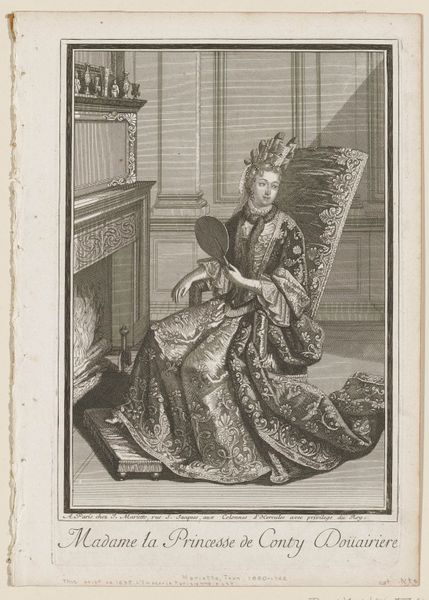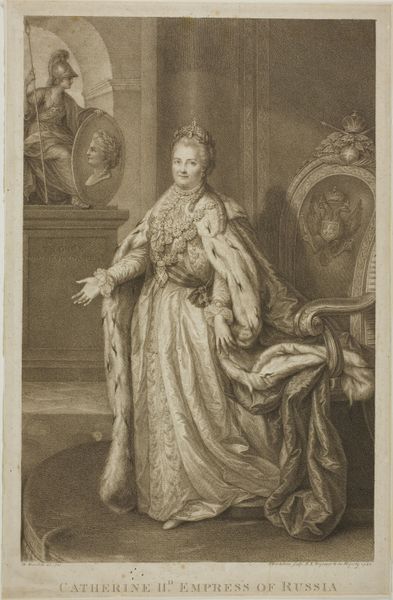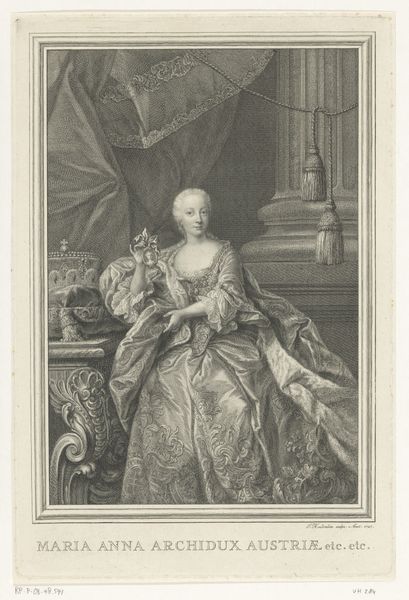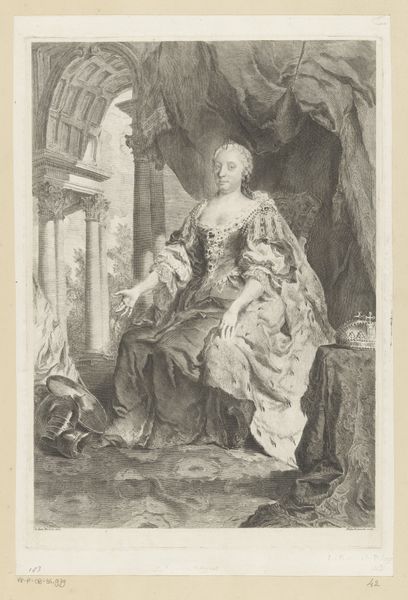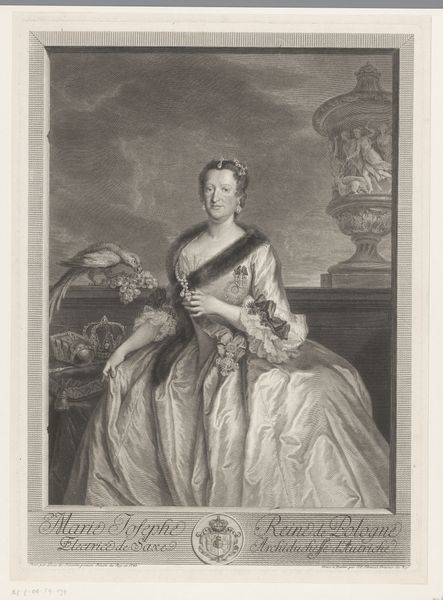
print, engraving
#
portrait
#
16_19th-century
# print
#
old engraving style
#
old-timey
#
19th century
#
genre-painting
#
history-painting
#
academic-art
#
engraving
Dimensions: height 549 mm, width 392 mm
Copyright: Rijks Museum: Open Domain
Curator: Oh, I’m just swooning at this engraving! It's by Jean Daullé, created in 1761. The Rijksmuseum holds this treasure, a portrait of Madame Anastasie, Landgravine of Hesse-Homburg. There's just something about the detail... What do you think? Editor: I’m immediately struck by the overwhelming display of status. Every detail seems designed to reinforce her position, from the elaborate dress to the formal setting. Curator: The dress, yes! Look at that embroidery! It's a feat of printmaking; he’s really showing off his technical skills. And there's a real stillness to her face... Does that resonate with you? Editor: Definitely, but that stillness feels deliberate. These portraits weren't about capturing fleeting expressions. They were about constructing an image of power and dynastic legitimacy. Her very posture suggests an assertion of aristocratic identity and authority. Curator: But there’s softness too, don't you think? The little dog there adds a domestic touch, making it more intimate and approachable somehow. Editor: I understand the inclination to soften the image, but even the dog is a prop! A signifier of wealth and privilege. It's all very meticulously arranged. We might consider this within the history of representing women in power – how is her image curated? Curator: I see what you're saying. Perhaps that window, though – framing the subject with outside light like that is, dare I say, an act of romance. Daullé's inviting us in…or perhaps he wants to tell us there is something outside her bubble of luxury. Editor: That framing also places her within a confined space, hinting at the limitations placed on aristocratic women. There is a tension between her material comfort and social restrictions that is common across many portraits like this. It is the classic golden cage trope, no? Curator: Mmm, it’s a gorgeous cage. Editor: Absolutely! I would simply push that it's important to analyze that gilding itself – its material context and how it is maintained. How this image is constructed matters profoundly to how her persona is broadcast to the world. Curator: Thanks for putting into words the things I didn't quite realize. These historical artworks—they seem to carry lifetimes within them, lifetimes we only see fragments of now. Editor: Indeed. By considering these artworks from multiple perspectives—formal, social, historical—we get a far richer understanding of them and perhaps of ourselves.
Comments
No comments
Be the first to comment and join the conversation on the ultimate creative platform.
